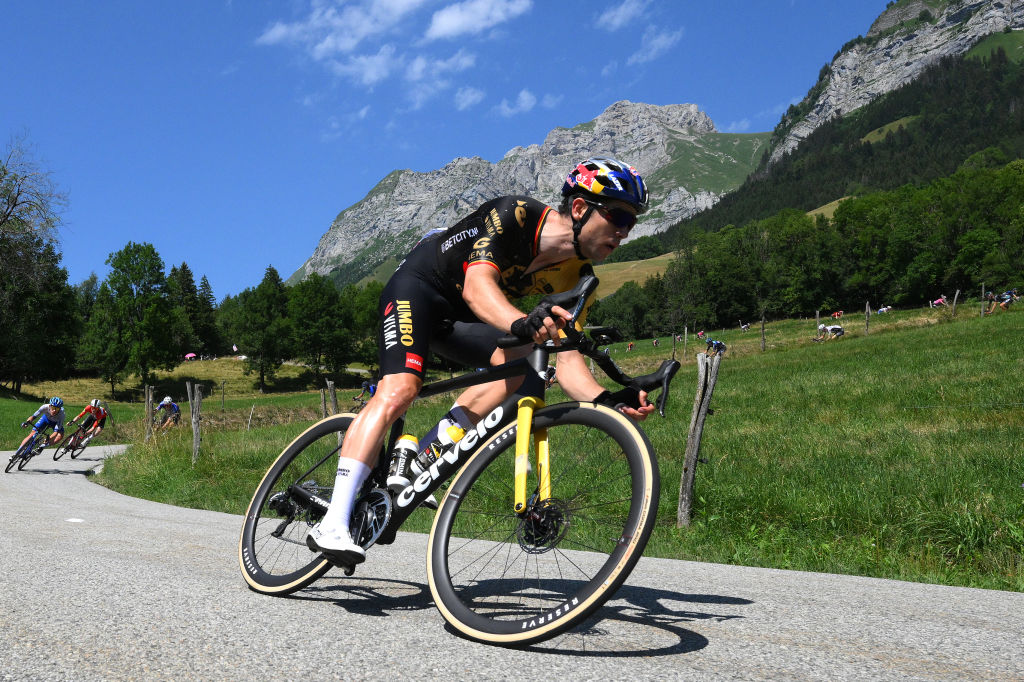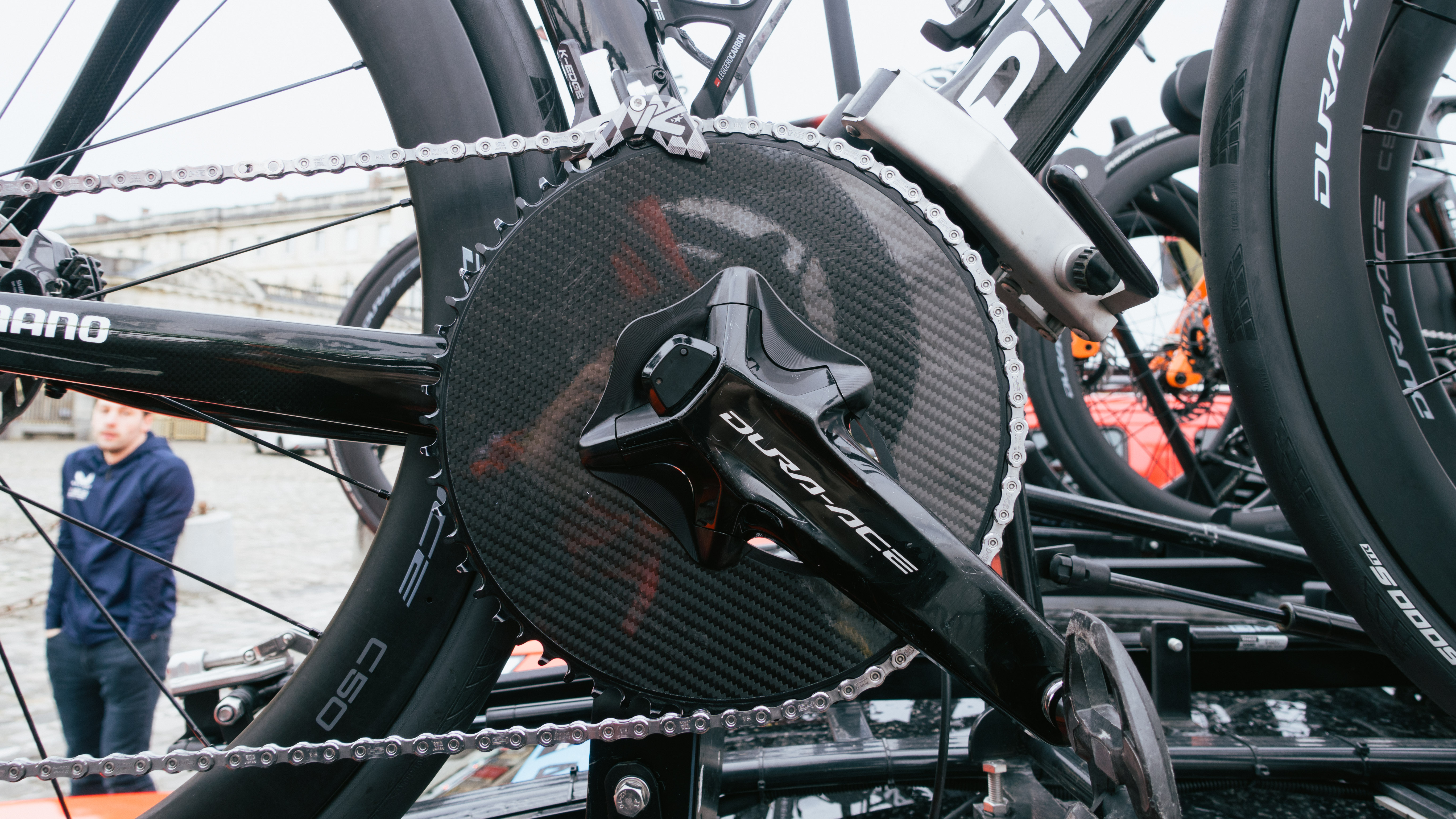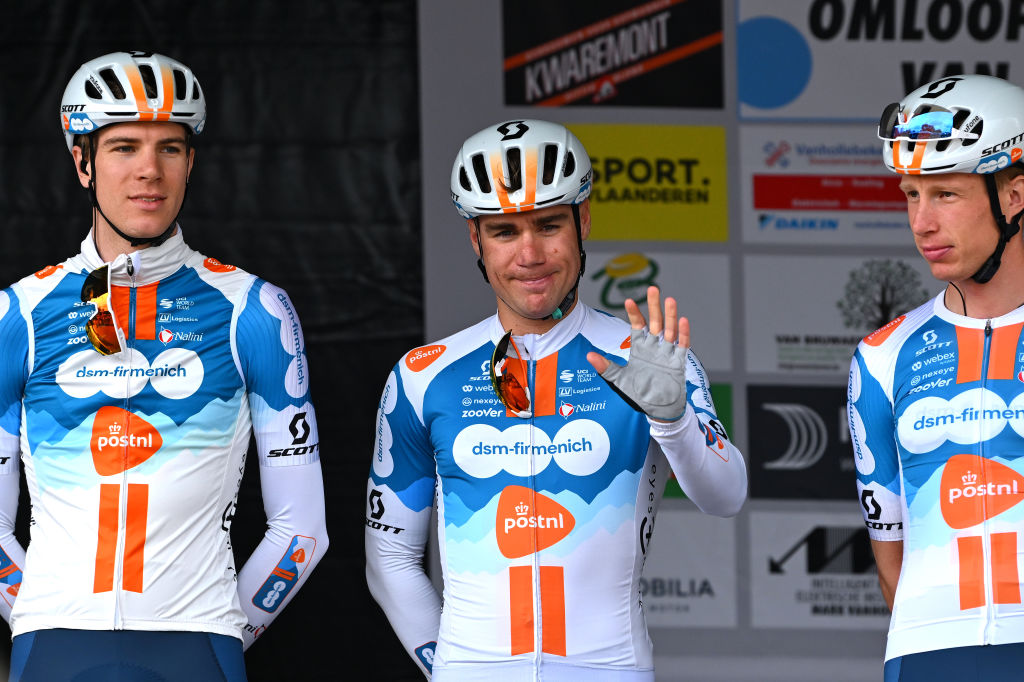
Some of pro cycling's most renowned equipment specialists have independently shunned the idea that restricting gears will improve rider safety in the pro peloton.
Dan Bigham, formerly Performance Engineer at Ineos Grenadiers and now Head of Engineering at Red Bull Bora-Hansgrohe, and Casper Von Folsach, Performance Coach at Uno-X Mobility have both made their opinions clear that restricting gears would not improve rider safety as suggested recently by Wout van Aert and Chris Froome.
Jenco Drost, Head of Performance Equipment at Van Aert's team, Visma-Lease a Bike, also offered his thoughts but opted to take a more pragmatic stance.
The argument was sparked by Van Aert in an interview with Sporza last week. "Limiting the gears would make the sport a lot safer, in my opinion," he explained. "Other riders don't think so but I'm convinced about it."
And in an interview with La Gazzetta dello Sport, Froome followed this up, saying "The speeds needed to move a 60 [tooth] chainring can be above 80km/h and you're still pedalling. Maybe we need to put a limit on them. I'm not saying junior gears, but maybe 56 or 54 needs to be the limit, to keep the speeds down on the descents."
Their argument claims that with bigger gears, riders are able to attack on fast descents, whereas on smaller gears they would 'spin out' - essentially being unable to pedal quickly enough to add any meaningful input.
"If you are on that descent with a gear limit, no one can move up," Van Aert explained. "Now the gears are so big that you still think about overtaking."
Bigham, whose entire career - both as a rider then as a performance engineer - has centred on optimising bikes, equipment and riders to make them faster, disagrees.
"Speed isn't determined by gear ratios. It's determined by input power divided by drag. Limiting gear ratios won't help if you want to slow races down," he wrote in an Instagram story.

The physics of it
Examining Van Aert's theory using a gear calculator, the logic is somewhat understandable, but as we'll discuss, there are plenty of caveats and loopholes to consider.
Using a cadence of 130 RPM (revolutions per minute) - a rough upper limit for road cyclists - a gear ratio of 53T x 11T and 28c tyres would create a wheel speed of 80km/h. This is fast, but not beyond the realms of pro riders on descents, where they occasionally hit 100km/h. Increase the chainring to a 62T - a size used by Josh Tarling at the 2024 Paris Roubaix - and the wheel speed at 130RPM would be 93.6km/h.
Of course, Tarling's chainring choice was primarily for drivetrain efficiency rather than top-end speed, as the less a chain needs to articulate around a ring, the lower the friction is in the system. There are also no descents fast enough at Paris-Roubaix to facilitate riding - let alone attacking - at 93km/h. Doing so on the flat would require approximately 3000 watts (or about 1200 watts more than a peak Mark Cavendish sprint) for a lone road rider, assuming a CdA (Coefficient of drag x Area) of 0.3m².
But on a descent of around 80km/h, while many riders would be hitting 130 RPM and close to spinning out in their highest gear, Tarling would, in this theoretical scenario, be at around 115 RPM and be able to continue pedalling, enabling him to add power and possibly move up through a group, or even attack.

Loopholes and lever mechanics
A bike's maximum gear ratio is a combination of the size of the chainring and the smallest sprocket on the cassette at the rear. A 62 x 11 combination is 150 gear inches – an estimate of how far a bicycle goes for one turn of the pedals.
A similar gear inch can be achieved using a 56-tooth chainring with a 10-tooth sprocket – 56 x 10 – or even a 51 x 9 combination - both of which are available on the market. So limiting chainring sizes to “56 or 54”, per Froome's suggestion, wouldn't be effective if riders were still free to shrink their cassettes.
What's more, Team Picnic PostNL's sprinter, Fabio Jakobsen, was quick to point out the loopholes that riders could find. In an interview with Patrick Brunt he drew particular attention to crank length.
"If you limit the gears, a loophole to that is riders going for shorter cranks."
Power is a combination of cadence and torque, and torque is a combination of force, lever length (in this case, the crank) and gear. Basic lever mechanics tells us that longer cranks require less force to push the same gear, so by the same logic, an easier gear paired with a shorter crank and the same force would make for similar torque, and thus similar power at a constant cadence.
Rejecting the theory
When speaking to Cyclingnews, Von Folsach, who has a history as a pro rider, and has since worked to optimise the Danish track team and Uno X Mobility, shut down Froome and Van Aert's argument matter-of-factly:
"I don't think it's a very good way of increasing safety. I assume their logic is that it would decrease speed, but depending on how extreme they would want to do this, I don't think it's a very effective way of decreasing speed. I think they are maybe overlooking some factors of how you can keep power high while restricting the gearing ratio."
Power is a combination of cadence multiplied by torque, and he points out that "if you enforce it to the degree where it truly would limit the speed, by substantially limiting the rider's ability to apply power, you would completely have changed cycling."
"The RPM of the riders would, in all non-climbing scenarios, be much, much higher; something I think could also be discussed how safe [this] is."
The aero drag at 90 or 100km/h is so significant too that in most situations, those speeds are only hit while freewheeling and tucking (making your frontal area as small as possible, hence the popularity of the super tuck, which was banned in 2021). And it's this aero drag on which Bigham centres his argument.
"If you genuinely want to reduce speeds (and I don't think that is what cycling needs to do to improve safety) then increase drag," Von Folsach continues, before really driving home his point by finishing his post by saying: "Louder again for those in the back - LIMITING GEARS WON'T HELP!"
Von Folsach also raises an interesting parallel with the recently removed restriction on junior gearing. "Looking to junior racing pre- and post-gear restrictions, it would be interesting to have some crash data. [This is] not something I'm sitting on, but looking at their speeds pre-gear reactions, I think it's clear to see that you can go very fast with relatively strict gear restrictions."
Detracting from the real topics
"I think focus on this should be spent elsewhere," the Dane continues. "This could, for example, be course design and inspection and closure to minimise crashes, medical response in case of accidents, or the addition of technology that actually improves safety in case of crashes, [such as] tracking of riders to know where they are and critical vital information, and maybe stuff that lessens the impact of crashes. For example clothing with built-in crash protection, airbag technology or something."
Drost's pragmatic approach agrees:
"There are a lot of things we can say and/or improve about rider safety," he told Cyclingnews. "Reducing gears could be one of them, but I think we should start in analysing/investigating what is unsafe at this moment. I think there are a lot of factors which can result in unsafe riding conditions and without clearly analysing or summarising these we are shooting blanks. Speed can make the crash more severe, but is speed the reason for the crash?"
Jakobsen too highlighted this as a more important area of concern:
"What we do have to look at is the safety of finishes and the type of parcours, but also the rules among sprint races."
Speaking in a recent interview with BikeRadar, Bigham agreed that attention should be focussed elsewhere, citing "unsafe roads, unsafe equipment, and poor, inadequate or slow medical response when the worst does happen" as the primary issues.
He also raised his own novel idea for slowing down the peloton: increasing the UCI's 6.8kg weight limit on bikes.
"I think increasing the weight limit does a lot of other things. It enables you to carry those additional sensors, additional systems, have a safer bike around factors of safety, and just design bikes that are a bit more fit for purpose.
"There are lots of ideas and lots of things you can do, but they [often] take weight and weight is a target, and if you’re nowhere near the limit then people are never going to be incentivised to do it unless they’re regulated to."
He even took aim at weight weenie bottle cages, blaming poor bottle retention for causing crashes. "[The UCI could] just regulate them – make them 50g – which is easily achievable and the retention will go up.
"Or we just have a clasp mechanism so [bottles are] locked in place. I bet that would cut out 10, 20 crashes a year."







